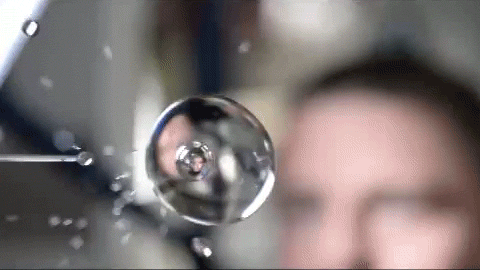8 July 2015
The Large Hadron Collider (LHC) is the world’s largest and most powerful particle collider and the largest single machine on the planet. Built by CERN between 1998 and 2008, it resides within a 27km (17mi) circular tunnel 175m (574ft) beneath the Franco-Swiss border near Geneva, Switzerland. Over 10,000 scientists and engineers from 100+ countries were involved in the design, construction, and use of the collider.
The LHC allows physicists to test the predictions of different particle physics theories and to study high-energy physics. This animation shows an actual proton collision event in 2010 detected by ATLAS, one of seven particle detectors built into the LHC. Protons are accelerated up to 99.9999991% the speed of light in the main LHC ring. By smashing together protons moving in opposite directions at extremely high speeds, it becomes possible to study massive particles previously not observable with lower-energy accelerators.
Source: https://youtu.be/NhXMXiXOWAA
#ScienceGIF #Science #GIF #LHC #LargeHadronCollider #Physics #StandardModel #CERN #Animation #ATLAS #Collision #ParticleAccelerator
View Original Post on Google+

7 July 2015
At the end of the Apollo 15 moonwalk, Commander David Scott performed a live video demonstration with a geologic hammer and a feather dropped simultaneously. Because the Moon has no atmosphere (essentially vacuum), there is no air resistance and therefore both objects fall at exactly the same rate. This validated Galileo’s claims that objects released together fall at the same rate regardless of mass.
Source: http://nssdc.gsfc.nasa.gov/planetary/lunar/apollo_15_feather_drop.html (NASA)
#ScienceGIF #Science #GIF #NASA #Apollo #Moon #Lunar #Apollo15 #Physics #Galileo #Mass #Newton #Acceleration
View Original Post on Google+
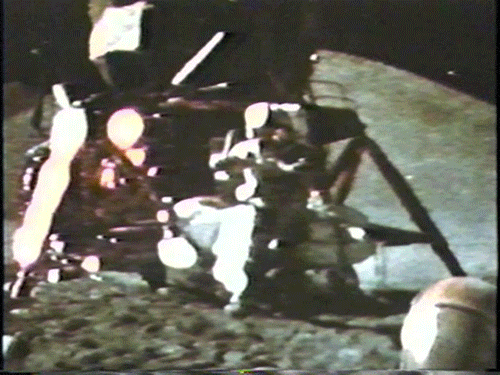
7 July 2015
NASA’s New Horizons spacecraft is now only one week away from making its flyby of our former outermost planet. The final frame was taken from only 11 million miles away from Pluto. These are the first color images ever taken of Pluto and Charon, its largest moon, and confirm decades of speculation about Pluto ‘s true color. High resolution black-and-white intensity imagery from the Long-Range Reconnaissance Imager (LORRI) were combined with color data from the Ralph instrument to produce the final color images.
Source: http://photojournal.jpl.nasa.gov/catalog/PIA19696 (NASA)
#ScienceGIF #Science #GIF #NASA #JPL #NewHorizons #Pluto #Charon #SpaceCraft #LORRI
View Original Post on Google+
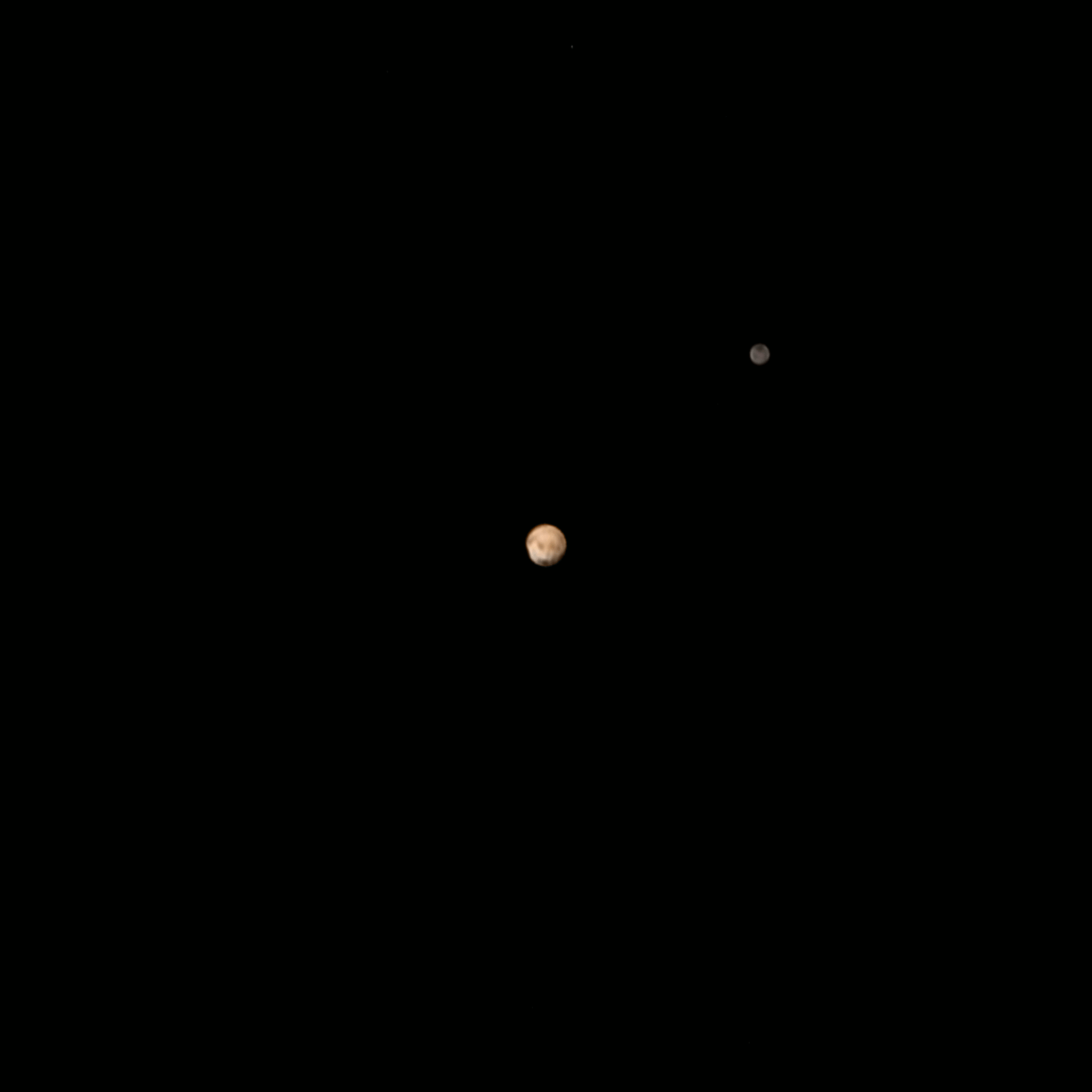
6 July 2015
Potassium chlorate (KClO3) is an extremely strong oxidizer and violently reacts upon contact with a fuel source (sugar). When the gummy bear is dropped into the beaker, it immediately reacts with the potassium chlorate and ignites. The heat generated is a great demonstration of the energy stored within carbohydrates like sugar.
DO NOT TRY THIS AT HOME
Source: https://youtu.be/JOHdZsQXw7I
#ScienceGIF #Science #GIF #Chemistry #Sugar #GiantGummyBear #GummyBear #PotassiumChloride #Reaction #Explosion #Fire
View Original Post on Google+
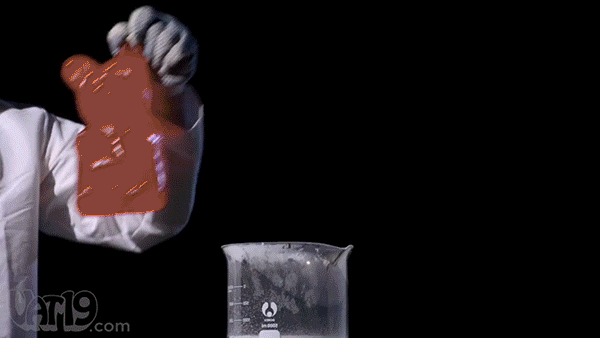
3 July 2015
When cooled in liquid nitrogen at -196°C, the band gap of the LED semiconductor increases. This causes an increase in the energy of the emitted photons and therefore a decrease in emission wavelength. When the yellow LED (λ = 570nm) is submerged it shifts towards emitting a green color (λ = 510nm). When the red LED (λ = 650nm) is submerged it emits a more orange color (λ = 590nm).
Source: https://youtu.be/5PquJdIK_z8
#ScienceGIF #Science #GIF #LED #LiquidNitrogen #Semiconductor #Diode
View Original Post on Google+
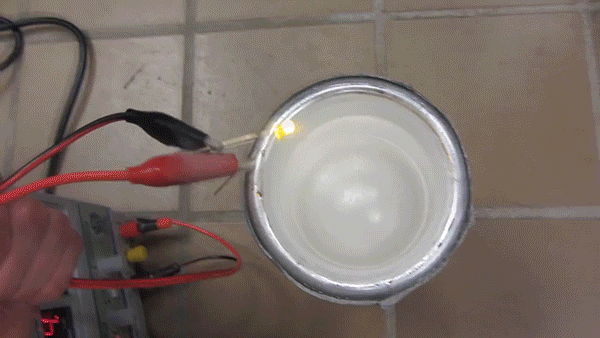
2 July 2015
This zoom-out from planet Earth to the afterglow of the Big Bang depicts the entirety of the observable Universe. It is part of the Digital Universe exhibit designed by the American Museum of Natural History’s Hayden Planetarium and represents the most complete and accurate four-dimensional map of the Universe.
The final frames depict the Cosmic Microwave Background , which is thermal radiation left over from the Big Bang over 14 billion years ago and the limit of our view into space and time.
Humanity looks so very small and young compared to the ancient immensity of the Universe.
Source: http://www.amnh.org/our-research/hayden-planetarium/digital-universe/ (Hayden Planetarium)
#ScienceGIF #Science #GIF #Universe #Space #SolarSystem #Earth #Planet #Moon #Satellite #Sun #Galaxy #MilkWay #LocalCluster #BigBang #CMB #Light
View Original Post on Google+

2 July 2015
This timelapse of images was taken by the Long Range Reconnaissance Imager (LORRI) camera aboard New Horizons between May 28 and June 25, 2015. During that time the distance between the spacecraft and Pluto decreased from 35 million miles to 14 million miles. Following its gravity assist maneuver around Jupiter, New Horizons is moving at 23km/s (51,000mph).
New Horizons is scheduled to make its flyby of the dwarf planet and Charon, its largest moon, on July 14, 2015. This latest imagery depicts a strongly contrasting surface dominated by a bright northern hemisphere, with a discontinuous band of darker material running along the equator. As the spacecraft hurtles towards its objective, each new picture represents the best image of Pluto captured by humanity.
Source: https://youtu.be/cqb4Mbwlj4c (NASA)
Mission Page: http://www.nasa.gov/newhorizons
#ScienceGIF #Science #GIF #Pluto #Charon #NewHorizons #NASA #space #Planet #DwarfPlanet #Moon #SpaceCraft #Explore #Discovery
View Original Post on Google+
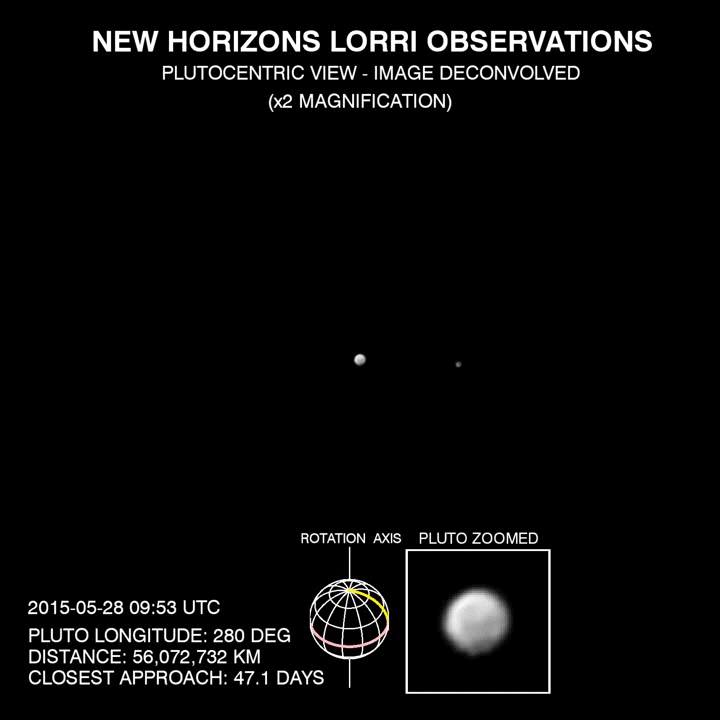
1 July 2015
The International Space Station (ISS) is the largest artificial object in orbit around the planet and frequently visible to the naked eye. It is also the most expensive object ever built by humanity with a price tag of more than $150 billion USD.
The first component was launched in 1998 and the space station is still under construction. To date there have been more than 159 components installed during more than 1,000 hours of EVAs (spacewalks). The station has been continuously occupied for over 14 years since Expedition 1 arrived on November 2, 2000.
Source: https://youtu.be/Ie-SgbykXtg
#ScienceGIF #Science #GIF #NASA #ESA #Roscosmos #JAXA #CSA #Space #SpaceStation #ISS #International #Orbit
View Original Post on Google+
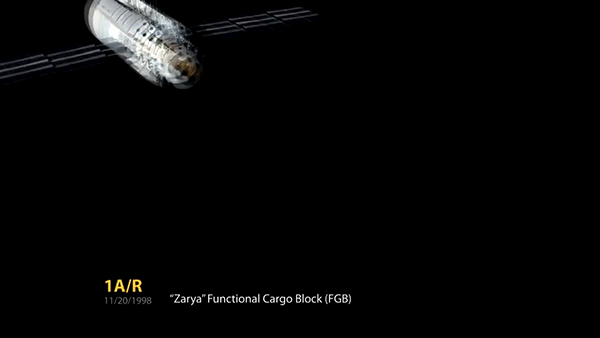
30 June 2015
The Briggs-Rauscher oscillating reaction is one of a small number of known oscillating chemical reactions that produces striking color changes, making it great for demonstrations. The initial mixture of three colorless solutions results in an amber color before it suddenly changes dark blue. After some time, the solution fades back to amber and then continues oscillating between the two colors.
The color changes occur because of a complex combination of slow and fast reactions taking place simultaneously. The negative feedback loop that causes the delay in color change is extremely rare in nonbiological chemical systems.
Source: https://youtu.be/_gyzhvMLImg
#ScienceGIF #Science #GIF #Chemistry #ChemicalReaction #Chemical #Reaction #Oscillating #rxn
View Original Post on Google+
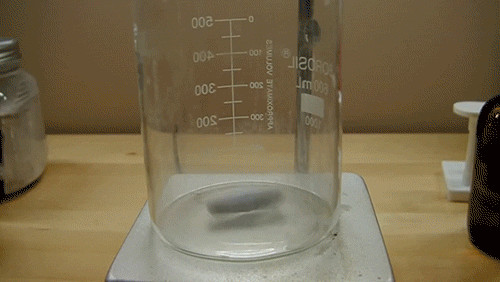
29 June 2015
When exposed to zero gravity, surface tension causes water to form a sphere. The surface tension also causes the water to resist changes in its shape. As water is sprayed from a dropper towards the larger sphere, many of the drops bounce off the sphere rather than merge. This is because the force of the water droplet is less than the surface tension of the bubble and therefore unable to penetrate and merge with the larger sphere.
Source: https://vine.co/v/Oe2v2KpTaPi (Reid Wiseman)
#ScienceGIF #Science #GIF #SpaceVine #Space #NASA #ISS #Space #ZeroGravity #Weightless #Physics #SurfaceTension #Water
View Original Post on Google+
